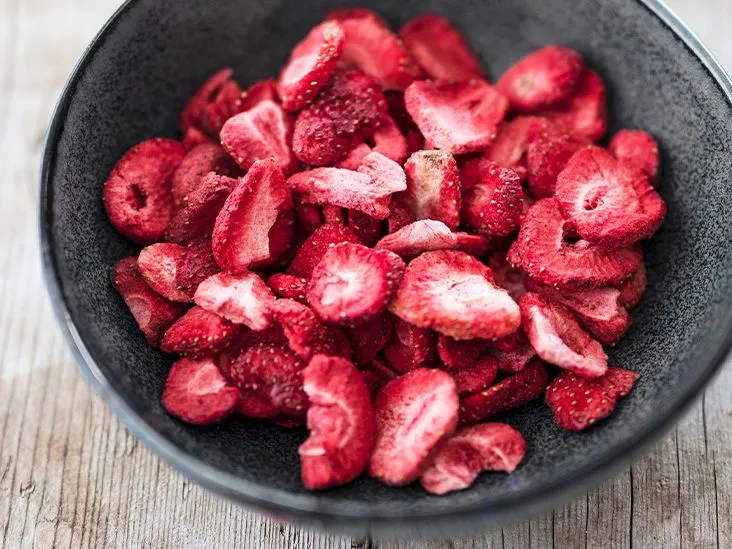Understanding Freeze-Drying: Process and Health Benefits of Freeze-Dried Foods

How Does Freeze-Drying Work and Are Freeze-Dried Foods Healthy?
Have you ever wondered how food can stay fresh for so long without refrigeration? Freeze-drying, also called lyophilization, is a smart dehydration technique that first freezes your food and then removes its water by turning the ice directly into vapor—a process known as sublimation. This method is popular not only among outdoor enthusiasts and emergency preppers but also in the food and pharmaceutical industries.
What Is Freeze-Drying?
Freeze-drying works by carefully controlling temperature and pressure to remove water from food while it remains frozen. This means that the food’s natural flavors, nutrients, and structure stay mostly intact. The process happens in three clear steps:
- Freezing: The product is frozen under normal atmospheric conditions.
- Primary Drying: Known as sublimation, this step removes the frozen, or "free," water directly as vapor.
- Secondary Drying: Here, the remaining “bound” water is gently removed to achieve the desired dryness.
The key is keeping the water frozen until it sublimes, which protects the food’s quality and extends its shelf life.
Are Freeze-Dried Foods Healthy?
Yes, freeze-dried foods are generally considered a healthy choice. Because the process happens at low temperatures, it does a great job preserving important nutrients and antioxidants such as vitamin C, flavonoids, and anthocyanins found in fruits and vegetables. This means your favorite berries or even a hearty soup maintain much of their original flavor and nutritional punch.
By removing water, freeze-drying not only locks in these benefits but also reduces weight and volume, making foods easier to store and transport. However, it's important to note that freeze-drying does not eliminate all harmful bacteria, so foods like raw meats or eggs must be cooked before consumption.
What Foods Can Be Freeze-Dried?
Freeze-drying is incredibly versatile. It’s used in making ready-to-eat meals for camping, space travel, and emergency rations. You can find a variety of freeze-dried options on the market, including:
- Fruits: Strawberries, apples, bananas, and even mixtures like fruit puree.
- Vegetables: Carrots, tomatoes, mushrooms, peppers, and more.
- Proteins: Meats such as beef, chicken, and even seafood, along with eggs.
- Grains and Legumes: Rice, pasta, beans, lentils, and quinoa.
- Complete Meals & Beverages: Favorites like stews, Pad Thai, and even instant coffee or tea.
Things to Consider When Using Freeze-Dried Foods
Despite its advantages, there are a few points to keep in mind:
- Safety: Freeze-drying does not destroy all bacteria. Make sure to cook raw meats or eggs after rehydrating to avoid foodborne illnesses.
- Nutrient Degradation: Although antioxidants are mostly preserved, the porous nature of freeze-dried foods may allow oxygen to reach sensitive nutrients, potentially leading to a slight decrease over time.
- Equipment Needs: Trying to freeze-dry your food at home requires special equipment and control over temperature and pressure. Without the proper tools, it’s best not to experiment.
Have you ever thought about how the process that keeps your snacks fresh on long hikes actually works? Understanding freeze-drying can help you make smarter choices about the foods you eat and store.
The Bottom Line
Freeze-drying is an effective way to remove moisture from foods by turning frozen water directly into vapor. This method is highly regarded for its ability to preserve nutrients, flavor, and texture while extending the shelf life of various foods. Remember, while freeze-dried foods help retain beneficial compounds, always properly cook raw freeze-dried ingredients such as meat or eggs. If you’re intrigued by this process, perhaps you’ll be more curious about trying some freeze-dried snacks on your next adventure!